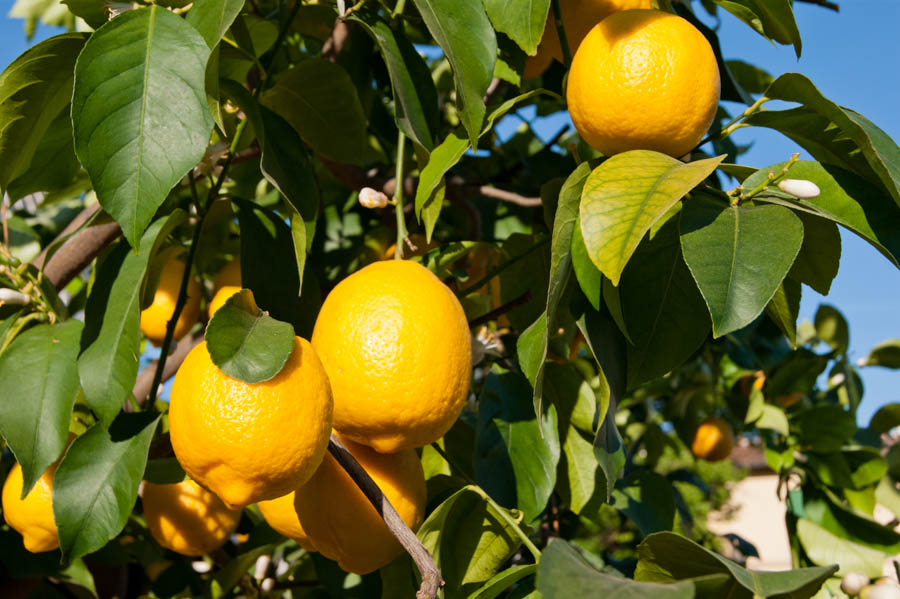Watering Lemon Trees for Maximum Flavor

Watering lemon trees correctly is important for many reasons: proper development of healthy trees, limiting pests and diseases, increasing yields and maximizing flavor.
Citrus require regular watering and sufficient soil moisture, especially early to midway through the fruiting cycle. Consistent irrigation is also critical for the first few years while citrus trees are establishing, to encourage healthy, deeply rooted trees. Watch for citrus leaves curling inward or appearing to change slightly in color as the lighter undersides become more visible, which indicate drought stress and early wilting.
Citrus trees suffer in soils that drain poorly or are too wet. Standing water may limit nutrient uptake, and if it lasts for more than a few hours, tends to encourage disease. GardenZeus discourages planting lemon trees in lawns or using sprinklers for watering trees. Sprinklers and other shallow surface irrigation are generally inappropriate for citrus and other trees, and may encourage root rot, other diseases and pests, shallow rooting, and other problems. Dry conditions in the upper soil within the dripline generally promote healthy trees and may help to limit the spread of soil pathogens.
Irrigation frequency is dependent on the climate, age and size of the tree and depth of its root system, time of the year, and soil type in your landscape. Newly planted and young trees require frequent, shallow watering near the trunk, generally 1 to 2 times per week during warm-to-hot weather, and once every 1 to 3 weeks during cool weather with no rain. Within 6 months to 2 years after planting, trees should be watered less frequently, further from the trunk at the edge of the young canopy, and for a longer period of time, with a slow drip or hose trickle from 20 minutes to an hour or two, depending on soil type, tree size, and root depth.
Generally, the majority of the roots of citrus and most other trees are found in the top 2 feet of soil, with water-absorbing feeder roots primarily in the top 12 inches. Citrus roots are fibrous and branching, and may extend to a distance or radius of twice as far from the tree as its dripline, which is the edge of the canopy where rainwater naturally drips, with more feeder roots concentrated near the dripline than elsewhere in the root system. Water progressively more deeply, less frequently, and further from trunk after planting and as trees mature to encourage deeper rooting, which will minimize disease, improve anchoring, increase the tree’s access to soil moisture, and may increase yields.
Established trees prefer to be watered deeply at the dripline. Mature citrus trees generally need to be watered slowly for 4 to 6 hours or longer, about once every 2 to 3 weeks when when actively growing, when setting fruit, or during hot weather, and may need watering only once every 1 to 3 months during cool, dry weather if not actively growing or fruiting. Wet the entire dripline with a soaker hose or water for a few hours in successive quadrants of the root area at the dripline to encourage root growth on all sides of a tree.
It is important to provide sufficient soil moisture for citrus during the period between the flush of vegetative growth that precedes fruiting until fruits reach about 1 inch in diameter. Inconsistent watering or soil dryness between waterings may lead to fruit splitting. Learn to recognize the signs of water stress in citrus, the drooping and inward curling of leaves, and water often enough to avoid these symptoms.
To produce the strongest-flavored fruit, discontinue watering citrus 3 to 5 weeks before your lemons are ripe, which will concentrate sugars and flavor proportionately to water in fruit cells.
GardenZeus has customized information by plant and zip code. To get started, enter your zip code here.
Other articles of interest:
Why Are Leaves Curling on My Orange and Lemon Trees?